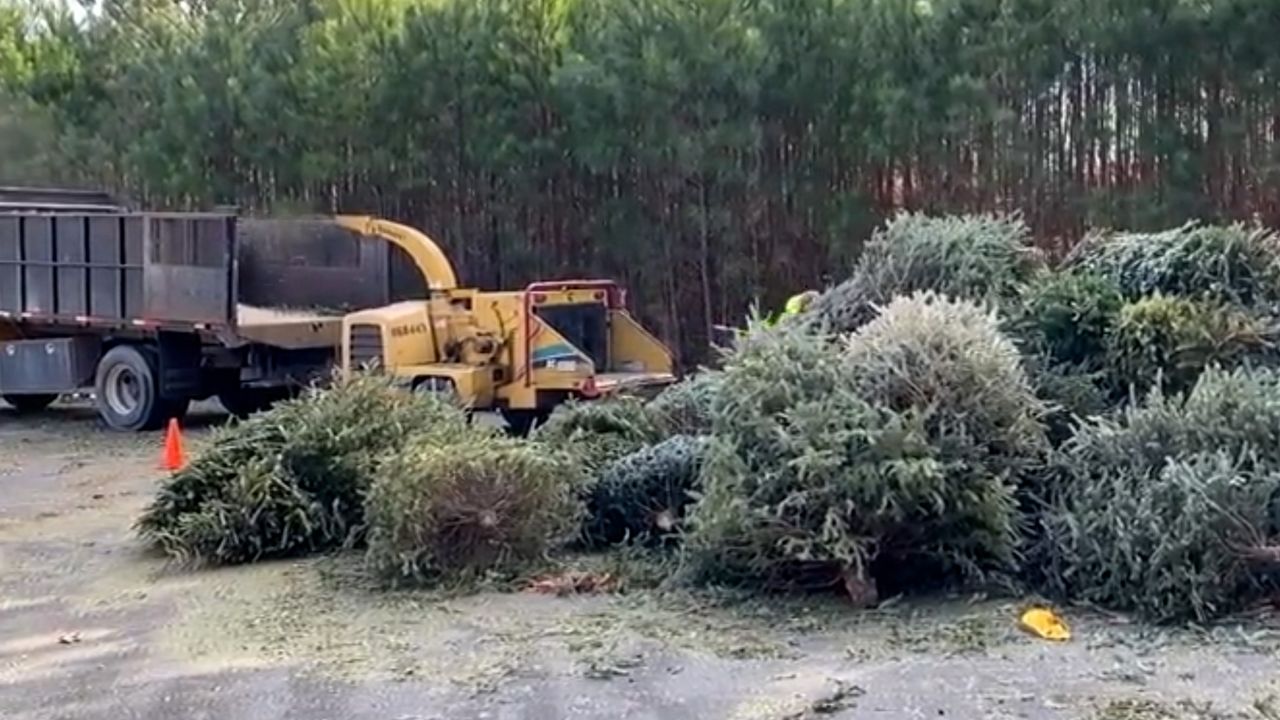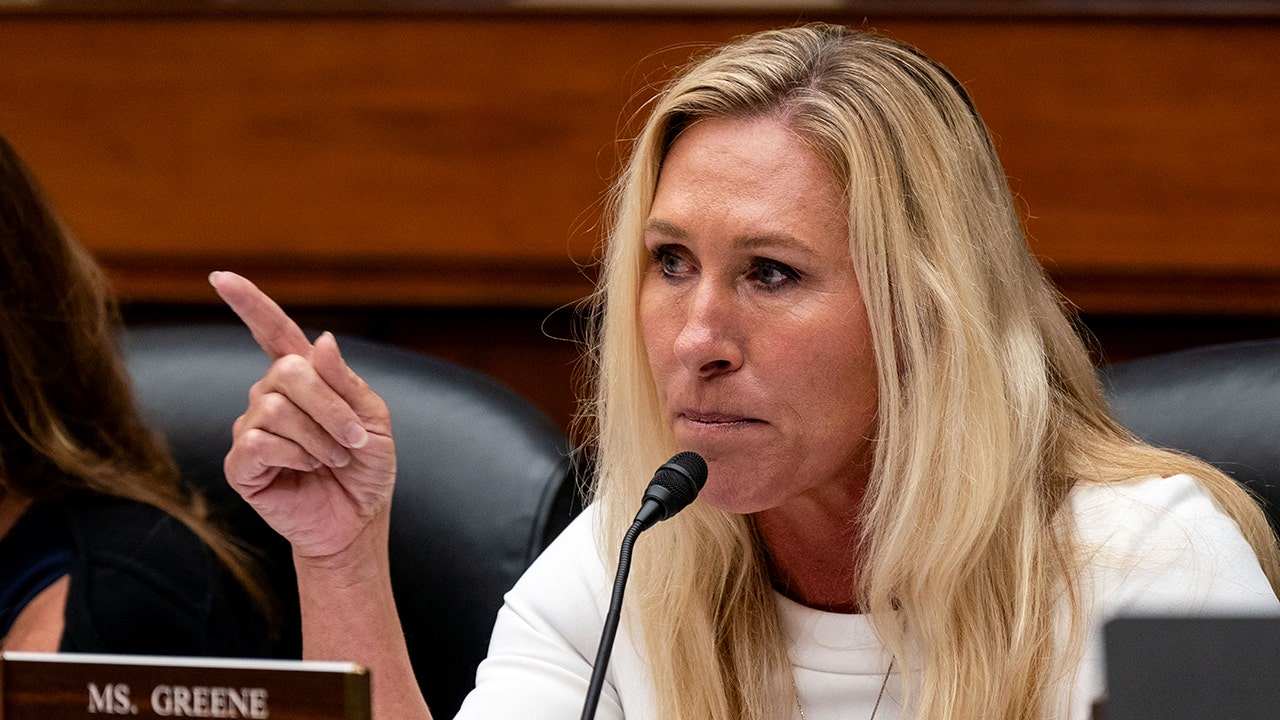Utah
Utah Inland Port Authority leaders unveil new brand, promise transparency

Estimated read time: 6-7
minutes
SALT LAKE CITY — The Utah Inland Port Authority doesn’t want to see the Crossroads of the West occupied by a sea of warehouses and it certainly doesn’t want to see Utah’s roads congested with cargo trucks.
On Wednesday, the port authority’s leaders unveiled its new brand identity and vision for the future, with a specific emphasis on transparency.
“The branding process for the Utah Inland Port Authority has provided an excellent opportunity to refocus the port around our core mission and values,” said Ben Hart, executive director of the Utah Inland Port Authority.
The new logo also comes with a new and improved mission for the port authority.
“We maximize long-term economic benefits in Utah by developing and optimizing economic project areas and logistics-based infrastructure,” Hart said.
So what does that mean?
Essentially, it means reducing what Hart classified as Utah’s “over-dependence” on roads and cars, especially when it comes to transporting goods. Instead of clogging the state’s roads, the port authority wants to create “multimodal” transportation options with a particular emphasis on rail transportation.
Doing so will give Utah companies a competitive advantage in both national and global markets “thanks to the world-class shipping and logistics infrastructure that we have here in the state of Utah,” said Miles Hansen, Utah Inland Port Authority board chairman and president and CEO of World Trade Center Utah.
Hart noted that this won’t be accomplished by simply building ports, though they do have an important role to play in modernizing Utah’s cargo transportation options.
and here’s the new logo! pic.twitter.com/CPvlWfjYtx
— Logan Stefanich (@loganstefanich) May 17, 2023
“(Our focus is) building a better statewide logistics system,” Hart said. “Inland ports play a key role in that strategy in our efforts to take trucks off of (the) road at access points throughout the state of Utah.”
Furthermore, Hart said inland ports provide jobs and help inject more life into the local economies they’re situated around.
“In coordination with inland port rail projects, we are also collaborating with communities to create employment hubs that will lift all areas of the state economically,” Hart said.
The Utah Inland Port Authority’s board of directors in April unanimously approved the Iron Springs Project Area resolution, creating Utah’s first-ever rural inland port in Iron County.
Hart said that the move will help support and boost a rapidly growing southern Utah.
More transparency
Utah Rep. Mike Schultz, R-Hooper, a Utah Inland Port Authority board member, thanked Hart and the rest of the port authority team during Wednesday’s brand unveiling, saying the dedication and hard work over the last year has allowed the port authority to “finally get to a point to where we can realize what the true goals are of the inland port.”
A legislative audit of the Utah Inland Port Authority last September said the board needed to outline clear goals for the future — which it hadn’t done at the time of the audit — before starting to spend some of the $150 million in bonds approved in 2021.
Auditors said they found a few “concerns,” including “financial commitment without adequate planning, gaps in organizational structure that reduce internal controls, and the need for stronger procurement and contract management.”
The report also noted contractors were largely “sole sourced” by the Inland Port Authority, meaning it solicited contract proposals from only one business at a time rather than going through the typical competitive request for proposal process.
Shortly after, a second audit of Utah Inland Port Authority practices said the agency should adjust its contract agreement policy, which state auditors said “lacks adequate transparency and accountability.”
Following the audits, the port authority and its board of directors decided to pause “all major capital projects” until it developed a Northwest Quadrant Master Development Plan.
“If our planning efforts determine a transload facility is right for this market, there will be robust engagement with neighborhoods on the west side of Salt Lake County and the business community,” Hart, who was the newly named director at the time, said in a statement to KSL.com. “A project of that size would also require a board resolution passed in a public meeting. Until then, we’re talking with all our stakeholders to ensure this master plan reflects what best suits Utah and its logistics needs.”
To Hart and the rest of the board, Wednesday’s unveiling can hopefully signify a move away from the issues that plagued the Utah Inland Port Authority over the last year which Hart himself previously described as “some super sketchy crap.”
“We needed a significant change at the port,” Hart told members of the Utah Legislature’s Business, Economic Development and Labor Appropriations Subcommittee in January. “I appreciate the fact that (state auditors) have given us a little bit of time to get this house in order because it really needed to happen. … There was some super sketchy crap going on at the inland port.”
There’s not anything happening behind closed doors, we have to bring it out. We found good government happens in the light, when everyone gets a chance to contribute and have their voice heard.
– Ben Hart, Utah Inland Port Authority executive director
Schultz said it’s imperative for the new board to not be hampered by the same issues that marked the time of the port authority’s previous leaders.
“I feel like the previous board had the vision but got sidetracked with a whole bunch of other things,” Schultz said. “Now, it’s incumbent upon us to move forward with that vision.”
Hart — who wasn’t involved with the Utah Inland Port Authority during the timeframe the audits criticized — added that the audits gave the new board a game plan in terms of things they needed to identify and do in a more “transparent manner.”
“We’ve been meeting with several stakeholder groups that have certainly pushed us a little bit and invited and asked us to be more transparent than what we were being,” Hart said. “(For) more significant documents such as a project area plan and budget, we’re doing a two-meeting public meeting cycle. Both meetings are required to have public comment prior to our board being able to adopt them and we’re also posting those documents 10 days prior to (the public meetings).”
The board has also reworked its procurement policy to make sure funds are being used in the way that the board outlined.
“There’s not anything happening behind closed doors, we have to bring it out,” Hart said. “We found good government happens in the light, when everyone gets a chance to contribute and have their voice heard.”
Hart noted recent community opposition to the Utah Inland Port Authority establishing a Tooele County Project Area, saying that the port authority will take more time with that proposal and meet with local stakeholder groups to hear their concerns.
“Whether it’s by rail, by road or by air — as Utah is becoming not just the Crossroads of the West but the crossroads of the world — we have to stay on the cutting edge of all transportation options or we’re going to be left behind,” Hansen said. “The importance of the port authority is that we are uniquely responsible for modernizing Utah’s infrastructure for the next generation of shippers.”
Contributing: Carter Williams
Related stories
Most recent Utah Inland Port stories
More stories you may be interested in

Utah
Judge orders legal fees paid to Utah newspaper that defended libel suit

SALT LAKE CITY — A businessman has been ordered to pay almost $400,000 to the weekly Utah newspaper he sued for libel.
It’s to cover the legal fees of the Millard County Chronicle Progress. In September, it became the first news outlet to successfully use a 2023 law meant to protect First Amendment activities.
The law also allows for victorious defendants to pursue their attorney fees and related expenses. The plaintiff, Wayne Aston, has already filed notice he is appealing the dismissal of his lawsuit.
As for the legal fees, Aston’s attorneys contended the newspaper’s lawyers overbilled. But Judge Anthony Howell, who sits on the bench in the state courthouse in Fillmore, issued an order Monday giving the Chronicle Progress attorneys everything they asked for – $393,597.19.
Jeff Hunt, a lawyer representing the Chronicle Progress, said in an interview Tuesday with FOX 13 News the lawsuit “was an existential threat” to the newspaper.
“It would have imposed enormous financial cost on the on the newspaper just to defend itself,” Hunt said.
“It’s just a very strong deterrent,” Hunt added, “when you get an award like this, from bringing these kinds of meritless lawsuits in the first place.”
Aston sued the Chronicle Progress in December 2023 after it reported on his proposal to manufacture modular homes next to the Fillmore airport and the public funding he sought for infrastructure improvements benefiting the project. Aston’s suit contended the Chronicle Progress published “false and defamatory statements.”
The suit asked for “not less” than $19.2 million.
In its dismissal motion, attorneys for the newspaper said the reporting was accurate and protected by a statute the Utah Legislature created in 2023 to safeguard public expression and other First Amendment activities.
Howell, in a ruling in September, said the 2023 law applies to the Chronicle Progress. He also repeatedly pointed out how the plaintiff didn’t dispute many facts reported by the newspaper.
Utah
How Utah’s Christmas Festival has buoyed a changing coal community – High Country News

This story is part of a series on the future of Utah’s Coal Country. Read the first story about labor in the coal mines.
On the Friday evening after Thanksgiving, the Main Street of Helper, Utah, was pitch-black. The streetlights were off, and patches of ice dotted the sidewalk. At 6 p.m., a collection of small lights came into view from the south end of the street and slowly clarified into a procession of school children, holding flameless candles in mitten-covered hands as they sang “Jingle Bells.”
A crowd of about 40 people followed the kids into a small snow-covered park. Everyone gathered around the stage, where Mayor Lenise Peterman read a proclamation from Gov. Spencer Cox declaring Helper as Utah’s Christmas Town for the 35th year.
“Park City was trying to take our title,” said Mark Montoya, a co-director of Helper’s Christmas Festival, after Peterman read Cox’s statement. “But we didn’t let them. They don’t have a proclamation.” Montoya, an exuberant and warm middle-aged man, was born in Helper, a small town of 2,000 people in Carbon County, halfway between Salt Lake City and Moab, and he has never left.
The winners of the Miss Carbon County contest, wearing tiaras and sashes, took the stage next and led a countdown: “Ten, nine, eight. …” The crowd joined in, and the second they shouted “ONE,” the entire town lit up. Strings of white twinkle lights outlined each brick building. A colorfully illuminated train decoration brightened the park, which is next to the Union Pacific station where the “helper” engine — the town’s namesake — still waits, ready to assist trains up the nearby steep canyon. Even Big John, a towering statue of a coal miner, was wearing a Santa hat.
Helper’s two-week Christmas Festival started in 1990, as nearby coal mines were shutting down and laying off workers. The once-bustling town was, for years, the hub of Utah’s Coal Country known for its bars, brothels (the last one closed in 1977) and an assortment of restaurants whose diverse cuisine reflected the immigrants drawn to the mines from all over the world. “We’re the black sheep of Utah,” Montoya told High Country News. By the 1980s, though, Helper was practically a ghost town. “It was just desolate, like there was nothing here,” Montoya said. “That was half the reason why people started the annual Helper Light Parade. They did it to kind of lift the spirits of the community.”

In the 1990s, artists began buying abandoned buildings on Main Street, lured by the low prices, the town’s eccentric industrial history and the nearby scenery, especially the surrounding Book Cliffs. In 1995, they started an Arts Festival that attracted some visitors. Then the Balance Rock Eatery opened in 1999, and travelers on their way to Moab two hours south began pulling off the highway to grab lunch. Life returned to Helper as tourism increased, and some of the young professionals who had fled Carbon County began moving back home.
“We’re the black sheep of Utah.”
Montoya, however, had never had any desire to leave. “I just love this town,” he said. He has experienced Helper’s transition firsthand: He’s been involved in the Christmas Festival since its inception, selling hot chocolate out of an old Coca-Cola wagon when he was a teenager. Montoya, who works as the town’s mail carrier, also manages several new AirBnBs and long-term rentals. “I’d go from walking down the street and seeing all these vacant, dilapidated buildings to this,” he said, gesturing to the nearly full Main Street. “This is so much better.”
Change is hard, though, and not all locals support the transition from a coal-based economy to one that relies on tourism and the arts. Since 2020, Carbon County hasn’t produced any coal, and the Carbon Power Plant, just three miles north of town, shuttered in 2015. The residents who still depend on the coal industry travel 40 to 90 minutes south to work at the mines and power plants in Emery County. For Helper, the energy transition is about more than fuel replacement; it’s about diversifying the economy while also honoring the generations of workers who kept the lights on.
Montoya likens what’s happening in Helper to producing an ongoing play. “It takes everybody to make that play work,” he said. “And when you’re telling a story, sometimes you introduce new characters along the way.”


Scenes from the Helper Light Parade. The town’s two-week Christmas Festival started in 1990, as nearby coal mines were shutting down and laying off workers.
A FEW DAYS AFTER the lighting ceremony, locals gathered in the town cemetery for the annual Luminary Memorial Service. Historically, they used classic luminarias — paper bags aglow with candles — but this year they placed purple, green and blue solar lights near the headstones.
Some of the oldest graves there belong to Italian families who immigrated to the area in the late 1800s. On the south end of Main Street, “welcome” is engraved on the sidewalk in the 27 languages — from Greek to Japanese — that were spoken in Helper at the beginning of the 20th century.
Early miners in Carbon County faced racism, poverty and the daily, deadly risks of hard work underground. “These were really harsh conditions,” Roman Vega, curator of Helper’s Western Mining and Railroad Museum, said. “You had a lot of accidents. You had a lot of deaths.”
The Italian workers went on strike in the early 1900s, and Mary Harris Jones — the legendary “Mother” Jones, the iconic labor organizer — marched down Main Street with the miners. The United Mine Workers of America became a strong presence in the region, and every year on Labor Day, the UMWA celebrated the local workers and labor unions. Montoya fondly remembers the excitement — a big picnic, coal-shoveling contest and games for kids.

Montoya’s own great-grandparents moved to Carbon County from New Mexico in the 1940s. “All my coal-mining ancestors, my uncles and my grandfathers, they were all union members,” Montoya said. His father, who worked for the railroad, was also part of a union. Today, Montoya continues that legacy as the union steward for the Northwest region of the National Association of Letter Carriers.
Montoya has always considered Helper’s Main Street to be his “stomping grounds,” ever since he was a kid stocking shelves at the pharmacy in exchange for a soda. He has spent more than 25 years delivering the mail and, on his route, he can track the town’s evolution. Main Street’s once-abandoned buildings are now brightened by neon signs and fresh paint. Eighteen of them were restored by local developer Gary DeVincent and his wife, Malarie, a former Helper City Council member, who also own some of the AirBnBs and rentals Montoya manages.
“(The tourists) love the history of old towns,” Montoya said. “It’s a big draw.”
DURING THE FIRST WEEK of December, the Main Street businesses decorated their storefronts. Friar Tuck’s Barbershop, owned by Kylee Howell, won the window-decorating contest. A toy train that once circled her grandparents’ Christmas tree ran along the front of the display, one of its cars filled with snow-covered coal. In the corner, a tall rainbow-striped candy cane from Montoya served as a festive replacement for Howell’s usual pride flag.
The stripes on the barber pole on Howell’s shop have been twirling there for generations. Howell largely cuts the hair of the “blue-collar dudes” who work at the region’s remaining coal mines, power plants and manufacturing businesses. According to Headwater Economics, such non-service jobs were still the highest-paying jobs in Carbon County last year, though they employed the fewest people. Most jobs these days are in the lower-paying service industries, such as retail. Over 12% of families in Carbon County live below the poverty line, the third-highest rate in the state.
Howell has only been in Helper for four years, but she isn’t new to Carbon County; she lived in the nearby towns of Price and East Carbon until she moved to Salt Lake County as a teenager. Her family went to Helper twice a year, attending the Arts Festival on the third weekend in August and watching the light parade every December. She has fond memories of bundling up, sipping hot chocolate and watching the bright floats trundle down Main Street.

After Howell moved away, though, she never thought she’d return. Then, about four years ago, she and her wife found themselves looking for somewhere more affordable and rural to live.
Helper’s revitalized Main Street first sold Howell on the town. What solidified it for her, though, was the fact that Helper’s mayor was a lesbian. When one of her clients in Salt Lake first told her that, Howell didn’t believe it. But she looked it up, and sure enough, “There’s Lenise with her carabiner and cargo shorts,” Howell recalled.
Lenise Peterman moved to Helper about 10 years ago, a few years after her wife, Kate Kilpatrick, ventured here to fulfill her dream of being an artist. Since then, Kilpatrick has recorded the stories and painted the portraits of roughly 180 Helper locals.
When Peterman ran for mayor, she fully embraced the economic transition. “While we can respect and honor what the coal industry has done and been for us, it’s not the path to the future, and we need to decide if we’re just going to hold our breath and wait for a coal mine to close or a plant to close,” she told High Country News, “or we can proactively determine who we are and what we want to do, and let’s go do it.” That was her platform, and the town voted for it.
Now, Helper’s Main Street is busy nearly every weekend during summer, from its “First Friday” gallery strolls to the bimonthly Helper Saturday Vibes street fair, originally brought to Helper by the organizer of Park City’s summer market.
It’s hard work keeping a small town afloat, though. Peterman constantly applies for grants to fund infrastructure improvements. Tourism brings revenue through sales and transient room taxes, and the city has updated things like event permits to mitigate the impact on city resources. But the changes have also sparked controversy: New permits have increased the cost of putting on some special events. Last summer, one longtime local, Mike James, moved his Outlaw Car Show, which he started three years before the Christmas Festival began, to a town 35 miles away.
“While we can respect and honor what the coal industry has done and been for us, it’s not the path to the future.”
There have also been dramatic changes in the housing market. A couple of decades ago, Montoya said, there may have been as many as 20 houses for sale on his mail route. Now, there’s maybe two at any given time, and they’ll likely be snapped up within a week, he said. In a roughly eight-year period, he watched one small two-bedroom house go from $68,000 to $175,000. Now, a 1,600-square-foot home sells for over $400,000.
While Montoya still views tourism as a good path for the town, he said the AirBnBs should stay on Main Street. “I don’t think there’s a need for that in neighborhoods,” he said. “Those houses need to be available for people to move into.”

Small destination towns like Helper can fall into what researchers at Headwaters Economics call the “amenity trap.” As a place becomes increasingly attractive to tourists and wealthy homebuyers — people who want amenities — it often becomes too expensive for all but the very well-off. The coal industry has always had its booms and busts, but a tourism-based economy can prove equally precarious, creating an economy based on low-paying service jobs and unaffordable housing.
Peterman told High Country News that the town’s planning and zoning commission is looking at possibly limiting AirBnBs, though she’s “not super keen” on telling people what they can do with their property. Ultimately, Peterman views tourism as just one piece of the puzzle. She hopes the town can attract another industry that resonates with its amenities. “Why aren’t we building ATVs?” she wondered.

HOUSING COSTS IN HELPER have gone up, but they’re still a far cry from the prices in Moab and Park City. Howell, Montoya and others told High Country News that they’re not worried about Helper following in the footsteps of Utah’s more famous former mining towns. Helper lacks the amenities that other, wealthier towns boast; there is no nearby ski resort to attract millions of visitors or Arches National Park in the backyard. Instead, visitors have access to less well-known public lands, such as the San Rafael Swell, and, above all, the town has a history that it takes pride in.
While Helper’s transformation into an art and tourist town might seem like it conflicts with its mining history, those two strands are also intertwined. One of the co-founders of the Arts Festival, Thomas Williams, was a miner in Utah’s coalfields before becoming a painter. Williams passed away a few years ago, but his paintings of his fellow miners still hang at the Balance Rock Eatery.
Scenes from a Saturday morning “Breakfast with Santa.” Residents gather; Billy Deeter carves ham; Chanel and Jesse Candelaria, with their children Lennen, 8, and Sunny, 2, visit with Santa.
This relationship has helped some former miners embrace the changes. “I’m really happy about it,” Celso Montoya, Mark Montoya’s uncle and a retired coal miner, said. “These artists come here, and they’ve brought the town back up.” He loves the new brewery that opened on the north edge of Main Street a year and a half ago. He always gets the prosciutto sandwich. “After I finish it, and I’m walking out, I look up and say, ‘Take me, Lord, if you want.’”
As Helper continues to move forward, the Christmas Festival offers a sense of continuity. During its last two days, Brenda Deeter, who co-directs Christmas Town with Mark Montoya, spent hours cooking a “Breakfast with Santa” and back-to-back chili dinners in the town’s civic center. It was a true family affair, with Deeter’s children, grandchildren and in-laws flipping waffles by morning and dishing chili over kielbasa sausages — a town classic, a remnant from its history of immigration — by night.

“These artists come here, and they’ve brought the town back up.”
While the locals devoured the chili, Montoya and his friend Tyler Nelsen, who works at the Hunter coal-fired power plant 45-minutes south, drove around in a golf cart to line up the floats.
Local businesses, from Utah Power Credit Union to the nearby RV Park, created displays with thousands of lights. Intermountain Electronics, the region’s major manufacturing business, stole the show, though, with workers dressed in reindeer costumes who appeared to fly through the air, pulling a red sleigh: They sat on a long black beam attached to a lifting machine called a telehandler, and were raised and lowered by the driver as they cruised down Main Street. The float made Montoya, and the thousands filling the sidewalks, giddy with delight.
The festival ended with a fireworks show set to a soundtrack of Christmas songs on the local radio station. Montoya watched from behind Main Street, next to the railroad track, the outline of the Book Cliffs visible at the edge of town.
“I want people to discover this place,” he said.
Reporting for this project was supported by the MIT Environmental Solutions Initiative Journalism Fellowship.

Utah
White Christmas moves closer to reality for much of Utah

Those who asked Santa Claus for a White Christmas may find what they wanted under the tree… or better yet, on the trees as storms are expected to bring snow to much of Utah on the holiday.
TRACK THE STORMS: Get real-time weather by downloading the FREE Utah Weather Authority app
Southern Utah will wake up on Christmas morning with snow already likely on the ground as a storm moves in overnight. The winds then turn in the afternoon and the snow arrives along the Wasatch Front with a few inches possible in the northern Utah valleys.
Salt Lake City is currently seeing a 60-70 percent chance of receiving over a trace amount of snow, according to the National Weather Service, with the possibility of accumulating snowfall in the benches.
The mountains are expected to get a decent dump of snow, which will please skiers and snowboarders who have waited through a disappointing start to winter. The resorts up the Cottonwood canyons can see up to 10 inches of snow.

Another storm is expected to impact many of the state’s mountains on Thursday and Friday. Overall, the northern mountain areas could receive up to 3 feet of snow throughout all the storms, with the higher amounts possible in the Bear River Mountains and upper Cottonwoods.
The Thursday-Friday storm will only bring light accumulations to valleys.
-
/cdn.vox-cdn.com/uploads/chorus_asset/file/24924653/236780_Google_AntiTrust_Trial_Custom_Art_CVirginia__0003_1.png)
/cdn.vox-cdn.com/uploads/chorus_asset/file/24924653/236780_Google_AntiTrust_Trial_Custom_Art_CVirginia__0003_1.png) Technology5 days ago
Technology5 days agoGoogle’s counteroffer to the government trying to break it up is unbundling Android apps
-

 News6 days ago
News6 days agoNovo Nordisk shares tumble as weight-loss drug trial data disappoints
-

 Politics6 days ago
Politics6 days agoIllegal immigrant sexually abused child in the U.S. after being removed from the country five times
-

 Entertainment6 days ago
Entertainment6 days ago'It's a little holiday gift': Inside the Weeknd's free Santa Monica show for his biggest fans
-

 Lifestyle6 days ago
Lifestyle6 days agoThink you can't dance? Get up and try these tips in our comic. We dare you!
-

 Technology1 week ago
Technology1 week agoFox News AI Newsletter: OpenAI responds to Elon Musk's lawsuit
-
/cdn.vox-cdn.com/uploads/chorus_asset/file/25672934/Metaphor_Key_Art_Horizontal.png)
/cdn.vox-cdn.com/uploads/chorus_asset/file/25672934/Metaphor_Key_Art_Horizontal.png) Technology1 day ago
Technology1 day agoThere’s a reason Metaphor: ReFantanzio’s battle music sounds as cool as it does
-

 News2 days ago
News2 days agoFrance’s new premier selects Eric Lombard as finance minister



















